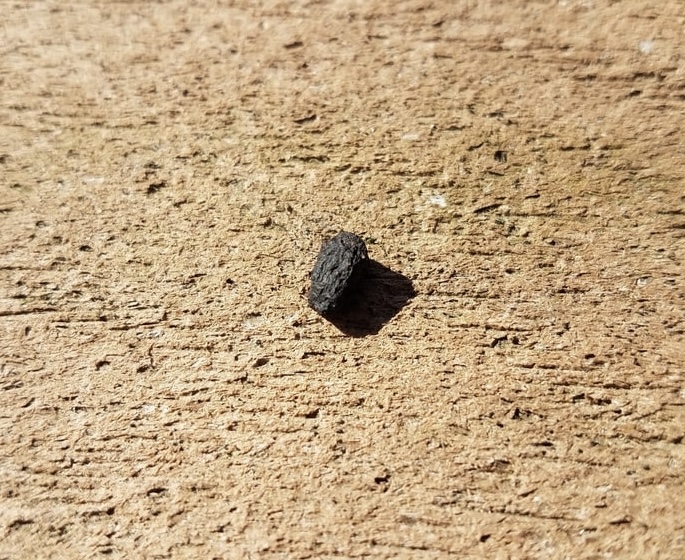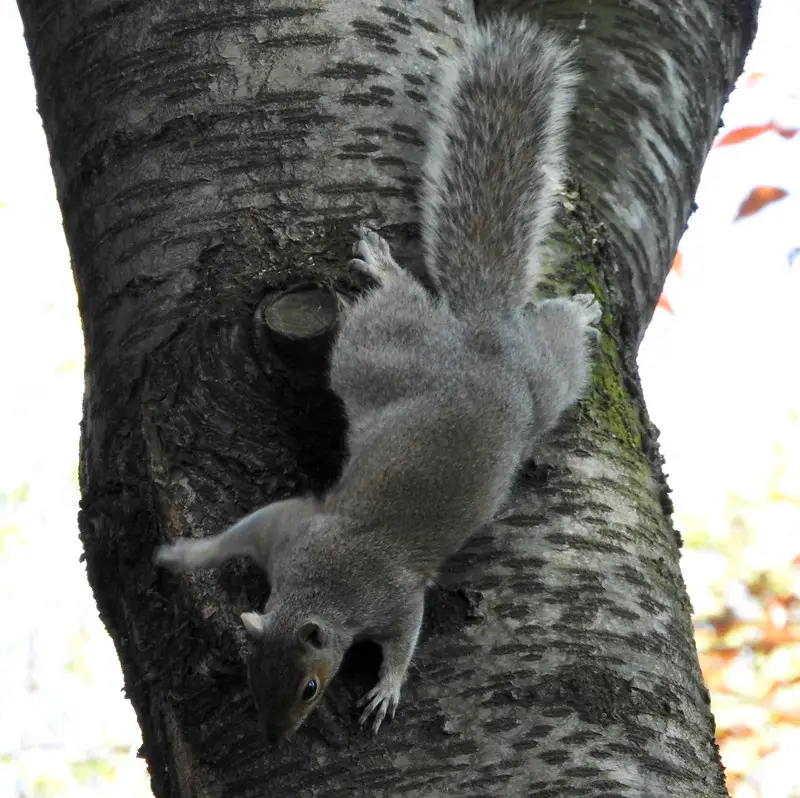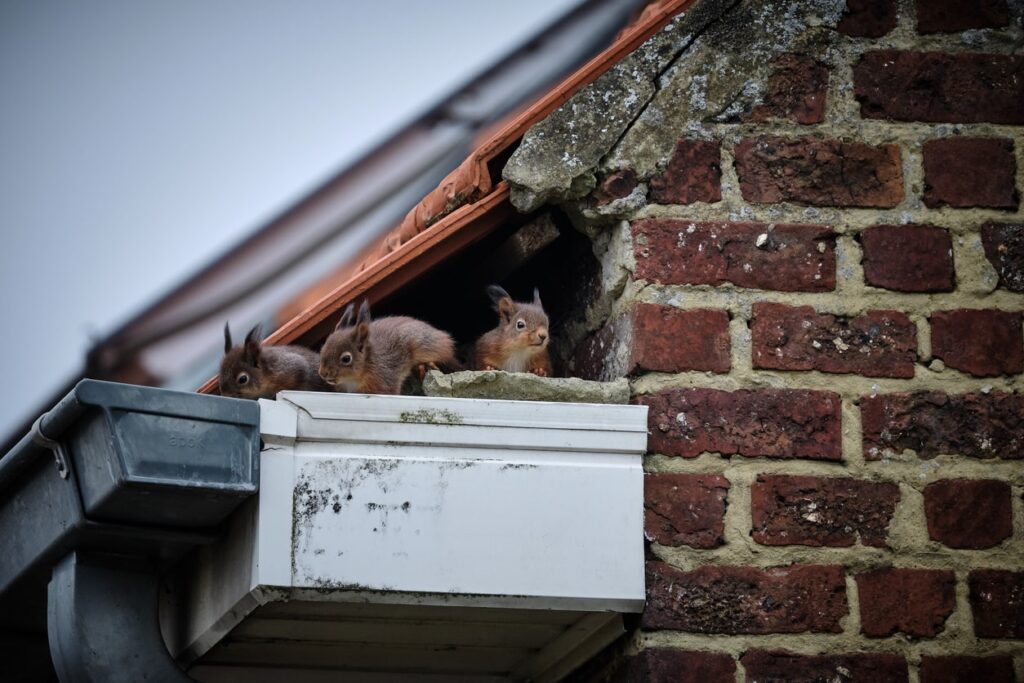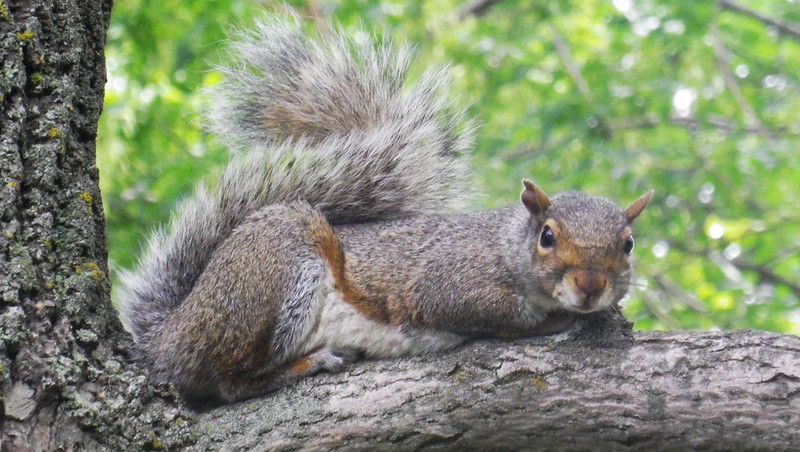Identifying squirrel poop isn’t a course you take in survival school, but that doesn’t mean it isn’t an important skill to have at times.
Homeowners, nature lovers, and hunters can all benefit by being able to identify squirrel scat.
Positively identifying squirrel poop in your attic or between your walls can save you a lot of money when a pest control expert. Knowing it’s just squirrel poop near your campsite will let you sleep better. Finally, finding squirrel poop when you are out hunting squirrels means you are in a target-rich environment.
I guess there is a fourth group, those of you just curious about everything. I feel you, family.
In this article, we’ll provide expert tips for identifying squirrel droppings and discuss the potential health risks associated with coming into contact with them. Whether you’re a homeowner, a nature enthusiast, or someone who wants to identify various animal wastes accurately, these tips will help you confidently identify squirrel poop.
Related: How to get rid of squirrels in your home.

How to identify squirrel poop.
Squirrel poop is small, elongated, and measures from half an inch to one inch in length. It may appear flattened or spindle-shaped and black (fresh) or brown (older) in color. It has a rough, dry and crumbly texture, is found in clusters as squirrels defecate in the same spot frequently.
The rough surface and visible presence of undigested nuts and seeds will help you tell squirrel poop from the smooth, pellet-like droppings of other animals, such as rats.

Using location to identify squirrel pooping.
In addition to the physical characteristics of squirrel poop, the location of the suspect droppings can also help identify them.
Squirrels make their homes in rural trees, but they are ubiquitous inhabitants of many urban and suburban areas. Indeed, squirrel poop is found in a variety of locations. Here are some of the most common places where you might find it.
Related: Squirrel hunting tips.
Squirrel scat in trees.
Squirrels are primarily arboreal animals, which means they spend most of their time in trees. As a result, you are most likely to find squirrel droppings on branches or in areas where squirrels have been foraging for food. If you see a cluster of small, dark brown or black droppings in a tree, they were likely left by a squirrel.
Squirrel poop in your attic.
Squirrels nest in attics and roofs, and you might squirrel find their scat in these areas. If you notice small piles of feces in your attic or on the top of your house, it could indicate that squirrels are present.
Squirrel pooping in your yard.
Gardens and yards: Squirrels are often attracted to gardens and yards, where they can find an abundance of food and shelter. If you see small clusters of droppings in your garden or on the ground around your house, squirrels may be the culprits.
Squirrel feces in the park or forest.
Parks and forests: Squirrels live in natural areas such as parks and forests, and their feces may be found along trails or where they have been foraging for food.
Related: What are the best guns for killing squirrels?

Is squirrel poop dangerous?
Like the droppings of other animals, squirrel poop can carry diseases and parasites that can harm humans. Here are some of the potential health concerns associated with coming into contact with squirrel droppings:
- Salmonella: Squirrel scat can harbor the bacteria Salmonella, which can cause food poisoning. This can occur if you accidentally ingest squirrel poop or if you touch the droppings and then touch your mouth or food without washing your hands.
- Hantavirus: Squirrel poop, as well as the urine and saliva of infected animals, can contain the Hantavirus, which can cause a severe respiratory illness called Hantavirus Pulmonary Syndrome (HPS). HPS is transmitted to humans through contact with infected rodent droppings, urine, or saliva, or through inhalation of dust or particles that contain the virus.
- Toxoplasmosis: Squirrels, as well as other animals such as cats and birds, can carry the Toxoplasma gondii parasite, which can cause toxoplasmosis in humans. Toxoplasmosis can cause flu-like symptoms, and it can be particularly dangerous for pregnant women, as it can cause serious birth defects.
It’s important to avoid coming into contact with squirrel poop whenever possible, to reduce the risk of exposure to these and other diseases—perhaps even Zika.
If you do come into contact with squirrel poop, it’s essential to wash your hands thoroughly and avoid breathing in any dust or particles that may be present.
If you suspect squirrels are nesting in your home, it’s a good idea to have a professional remove the droppings and clean the area to ensure it is safe.

Squirrel poop identification: Conclusion.
Squirrel droppings, or feces, are small and elongated, typically measuring about half an inch to an inch in length. They may have a slightly flattened or spindle-shaped appearance and are usually dark brown or black. Squirrel poop is often found in clusters, as squirrels repeatedly defecate in the same spot. It is typically quite dry and crumbly and may have visible bits of undigested seeds or nuts.
Squirrels are most commonly found in trees, so you may find their droppings on branches or where they have been foraging for food. However, squirrels are also known to nest in attics, roofs, and other structures, so you may also come across their droppings in these areas.
Squirrel feces can carry diseases and parasites that can be harmful to humans, so it’s important to avoid coming into contact with them whenever possible.
If you do come into contact with squirrel droppings, be sure to wash your hands thoroughly and avoid breathing in any dust or particles that may be present.

